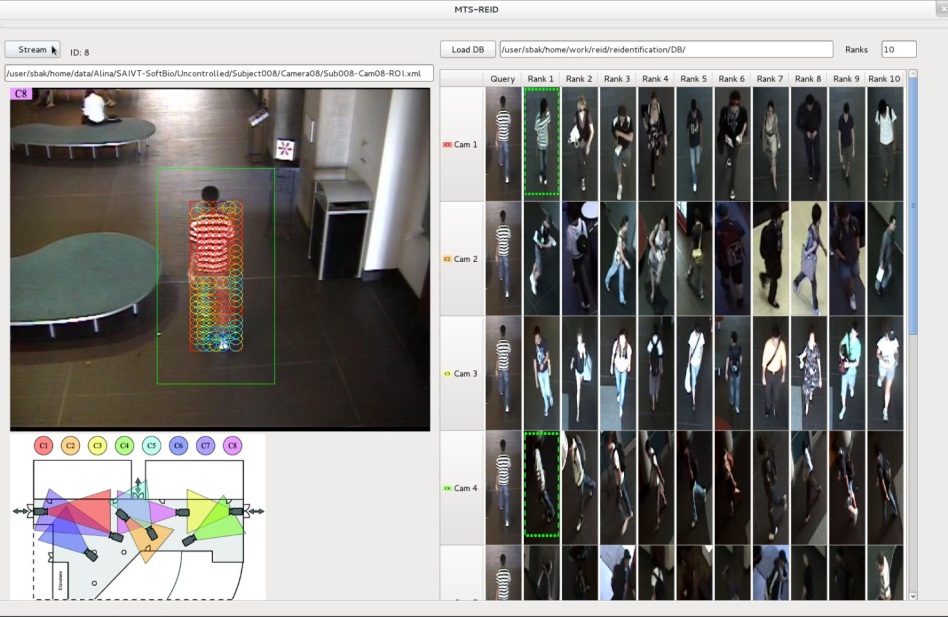Section: New Results
People Retrieval in a Network of Cameras
Participants : Sławomir Bąk, Marco San Biago, Ratnesh Kumar, Vasanth Bathrinarayanan, François Brémond.
keywords: Brownian statistics, re-identification, retrieval
Task. Person re-identification (also known as multi-camera tracking) is defined as the process of determining whether a given individual has already appeared over a network of cameras. In most video surveillance scenarios, features such as face or iris are not available due to video low-resolution. Therefore a robust modeling of the global appearance of an individual (clothing) is necessary for re-identification. This problem is particularly hard due to significant appearance changes caused by variations in view angle, lighting conditions and different person pose. In this year, we focused on the two following aspects: new image descriptors and a design of a retrieval tool.
New image region descriptors. We have evaluated different image descriptors w.r.t. their recognition accuracy. As the covariance descriptor achieved the best results, we have employed this descriptor using different learning strategies to achieve the most accurate model for representing a human appearance [51] . We have also proposed a new descriptor based on recent advances in mathematical statistics related to Brownian motion [31] . This new descriptor outperforms the classical covariance in terms of matching accuracy and efficiency. We show that the proposed descriptor can capture richer characteristics than covariance, especially when fusing nonlinearly dependent features, which is often the case for images. The effectiveness of the approach is validated on three challenging vision tasks: object tracking & person re-identification [31] and pedestrian classification (the paper submitted to conference CVPR 2014). In all our experiments, we demonstrate competitive results while in person re-identification and tracking we significantly outperform the state-of-the-art.
New design of retrieval tool for a large network of cameras. Owing to the complexity of the re-identification problem, current state of the art approaches have relatively low retrieval accuracy, thus a fully automated system is still unattainable. However, we propose a retrieval tool [30] , [29] that helps a human operator to solve the re-identification task (see Figure 28 ). This tool allows a human operator to browse images of people extracted from a network of cameras: to detect a person on one camera and to re-detect the same person few minutes later on another camera. The main stream is displayed on the left of the screen, while retrieval results are shown on the right. The results show lists of the most similar signatures extracted from each camera (green boxes indicate the correctly retrieved person). Below the main stream window a topology of the camera network is displayed. Detection and single camera tracking (see the main stream) are fully automatic. The human operator only needs to select a person of interest, thus producing retrieval results (right screen). The operator can easily see a preview of the retrieval results and can go directly to the original video content.
Perspectives. Currently, we are working not only on invariant image descriptors, which provide high recognition accuracy, but also on improving the alignment of the person pose, while matching appearance from cameras with significant difference in viewpoint. In addition to re-identification technology, we also work on designing an intuitive graphical interface, an important tool for the human operator analyzing retrieval results. Displaying retrieval results from a large camera network is still an issue, even after applying time-space constraints (the usage of topology of cameras).
Acknowledgements
This work has been supported by PANORAMA and CENTAUR European projects.


